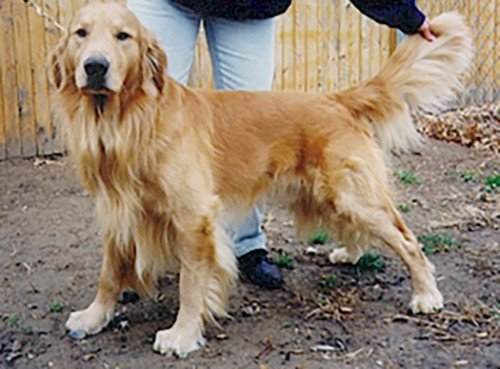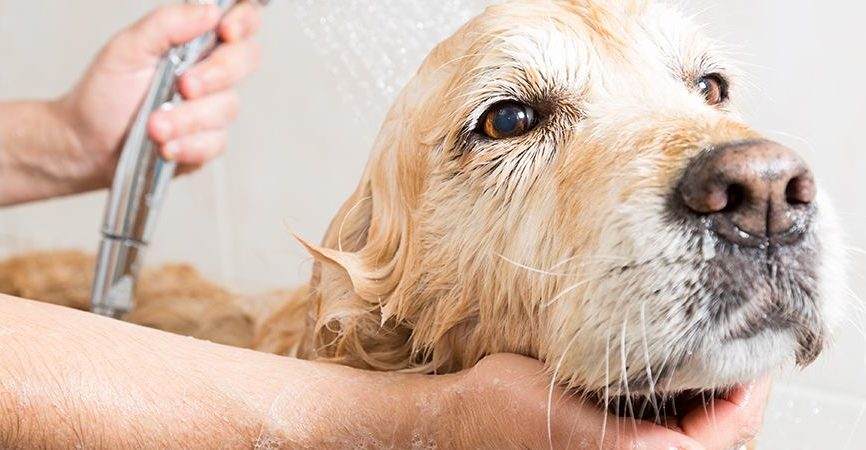
Whether it is a human or a dog, itching is quite troublesome for everyone. Many people don’t know that in dogs after allergies the yeast infection is the second most reason behind itching. It not only irritates the dog and urges them to scratch and bites different parts of their body. But it can also cause lots of pain in the dog. If not treated on time, it can spread further and cause multiple health-related problems to the dog. Let’s learn about this common disease of dogs and how to cure it. This information will help a dog owner in many different ways.
What is a Yeast Infection?
Yeast is a type of fungus that grows on the skin. In scientific terms, Malassezia pachydermatis fungus is the culprit behind this infection. This fungus lives and breeds in a moist area. The fungus slowly eats healthy living skin cells and spread on the skin. This infection occurs on the surface of the skin. The yeast infection is not contagious. Hence, it cannot spread from one dog to another. This infection cannot pass from dog to human either. Most of the dogs catch this disease from the non-sanitized surface. This infection causes lots of itching and burning sensation. If not treated, it can spread throughout the body and the itching sensation can turn into burning pain.
Symptoms of yeast infection in dogs
Many people fail to diagnose yeast infections in the early stage. They confuse it with seasonal allergy. In most cases, people think it will be over in a couple of days with the season change. This kind of thinking only let the infection spread further. Over a period, the dog starts to behave differently and starts to lick, scratch its own body. Here are some common symptoms of yeast infection in dogs.
- Scratching
The yeast fungus slowly eats the skin and spread its area, when it does that the dog experiences a surge of itching sensation. To ease this infection, the dog starts vigorously scratch the infected area. Compared to a seasonal allergy, this scratching rate is more vigorous. A dog with a yeast infection does scratch the skin every minute or two.
- Tilted head
Yeast infection in the ear canal can mess up the vestibular system of the dog. It causes an imbalance in the dog. The dog can become disoriented quickly. To cope up with this problem, the dog keeps its head tilted. The dog also shows lethargic behaviour and does most move slowly.
- Hair loss
Yeast infection weakens the hair follicles and increases hair falling rate in the infected area. On the other hand, yeast infection kills healthy skin cells and prevents new hair growth. If it comes to notice that any certain part of the dog’s skin has less hair, then it could be a yeast infection.
- Change in skin colour
Most yeast infection grows at 2 to 3 centimetres rate per day. During this time it slowly eats healthy skin cells and turns them dead. This process discolours the skin cells. The dog skin in the actively infected areas turns pink or reddish colour. Similarly, the dead skin cells become brown and black.
- Odour
As yeast infection grows in size, it starts making a bad odour. In most cases, the odour smells like rotten flesh. A smelly dog can also signify its unhealthy living condition. These types of the condition also enhance the infection rate and help the yeast infection further on the body.
- Licking
Dog loves their paws and always likes to keep them clean. Therefore, licking its paws is quite a normal thing for a dog. However, if a dog excessively licks and bites its paw then it could be an indication of yeast infection. Early treatment is requiring for its cure.
Why a dog catch yeast infections
Yeast is a natural fugue present in nature. Most of the time dogs catch it when they go outside and play in the mud and wet area. Normally the fugue lives on the dog’s skin for a couple of days mutely. If the dog owner washes the dog properly, then the fugue washed away with water. However, unhygienic condition encourages it to breed further. This fugue loves moist areas on the dog’s body like the ear canal, paw, corner of the eyes, belly, tail, etc. Some dog species with long fur are more infectious to this disease including Poodles, German shepherd, Basset Hound, Golden Retrievers, Cocker Spaniel, West Highland white terrier, etc.
Important steps of Dog Yeast Infection Treatment
As a fugue Yeast is very persistent. It can survive harsh conditions in nature. Hence, getting rid of this infection is not easy. Killing this fugue takes patience and time. A dog owner’s ignorance can let it survive on the dog’s skin. In the future, it can come back and cause the same problems again. Here are some important steps a dog owner has to take to get rid of yeast infection permanently.
- Cleanliness
Cleanliness is a very important part of yeast infection treatment. All efforts of the dog owner will fail if the dog doesn’t live in a clean environment. The dog needs an immediate bath if it is spotted with a yeast infection. Use anti-yeast shampoo and conditioner. Dry off the dog well with a towel and hairdryer. A moist environment encourages yeast infection. After giving the dog a good bath, keep it in captivity for the next couple of days. Also, clean its habitation every day.
- Soothing
The yeast infections cause lots of itching in the dog. It encourages the dog to scratch the infected surface. It provides a temporary soothing experience. However, it makes the wound deep and spread the infection to the other parts of the body. The owner has to change the scratching and licking habits of the dog. Apply some soothing anti-fungal cream on the infected surface. If required, put a protective collar on the dog’s neck.
- Healing
The next step of treatment is healing. Rub off the dead skin cells from the infected surface with hot water. Then apply anti-fungal cream to the infected surface three times per day. Continue doing so, until new skin cells appear on the infected surface. The healing time depends on the amount of infection. A small yeast infection may get heal in 5 to 6 days, while a yeast infection on a large area may take 2-3 weeks to heal.
- Immunity development
Yeast is a persistent fugue. In many cases, it comes back after healing completely. A weak immunity system is responsible for this. Hence, the owner needs to develop a strong immunity system in the dog. Fortify its immunity system with lots of vitamins and minerals. Feed the dog vegetable stew, chicken broth, and fish. Avoid allergic food for the next couple of days.
Dog yeast infection Home Remedies
If the yeast infection size is small, then it can be treated at home with natural remedies. Most ingredients for this treatment are available in every household. However, the owner needs to keep one thing in mind that these home remedies give positive results only in the early stages. For deep yeast infection, wounds take the dog to a Veterinarian.
- Herbal shampoo
Many people don’t know that dog skin is very sensitive and the wrong kind of shampoo can encourage allergy. Hence, a dog with a yeast infection needs sensitive shampoo. The shampoo has to be strong, yet non-allergic to the dog. It is recommended to use herbal shampoo on a dog with yeast infections. Many people found that medicated herbal shampoos are very effective in yeast infection. After applying the shampoo to the infected area, let it work for 10 to 15 minutes. Then rinse it well with Luke warm water.
- Ginger paste
Ginger is known as an anti-microbial agent. Its strong amalgam properties naturally kill microbial bacteria and fugue. For this reason, it is used in many tropical cuisines and herbal medicines. Ginger paste also provides a soothing experience when applied to the infected area. It reduces the burning sensation. Many dogs don’t like the taste of raw ginger. Therefore, it prohibits them to lick the infected area and stops the spread of this fungus in other parts of the dog’s body.
- Apple Cider Vinegar
Apple Cider Vinegar is quite acidic and has a stingy property to it. This compound Changes the PH balance on the dog’s skin. This action starves the yeast fungus and kills it naturally. However, do not put raw Vinegar on the wound. It could create a burning sensation and it will cause a lot of pain to the dog. Always dilute the vinegar with water in a 1:1 ration. This dilution won’t cause any pain to the dog and reduce the yeast infection substantially.
- Coconut Oil
Coconut oil creates an oily film layer on the infected area. It blocks oxygen supply to the infection. The east dies out by suffocating for oxygen. It also creates a barrier for moisture and keeps water away from the infected surface. However, only organic coconut oil works best on yeast infection. Do not use coconut oil with mixed compounds. These oils can enhance the infection or cause further pain to the dog.
- Oregano Oil
Oregano is a popular ingredient of Italian cuisine. Just like coconut oil the oregano oil can also heal yeast infection. Oregano oil contains polyphenols. It is an organic chemical, which is anti-fungal. Oregano oil also has soothing properties. Hence it gives the dog relief from pain. The beautiful fragrance of the Oregano oil also removes the bad odour of the yeast infection.
What kind of Yeast infection treatment will my dog get at the vet?
The owner should consult a veterinarian if the yeast infections become uncontrollable with home remedies. Only the veterinarian can help the dog if the yeast infection spreads in critical areas like the ear canal. The owner can expect both topical and oral treatment for the dog from the veterinarian. Most doctors recommend Benzoyl Peroxide shampoo for the dog. It is an anti-fungal Medicated shampoo for the dog.
As a topical treatment, the doctor can recommend Hydrocortisone ointment. Along with fungal killing, the ointment provides soothing at the infected area. For oral treatment, most doctors prescribe Ketoconazole tablets daily. These tablets reduce itchiness and heal the wound from inside. For persistent yeast infection, doctors recommend Fluconazole tablets once a week. Fluconazole tablets boost the immunity system against yeast.
Even though most yeast infections can be treated with topical and oral treatment, but severe yeast infection needs surgery. Severe yeast infection in the ear canal doesn’t get recover easily with topical and oral treatments. Only after examining the dog, the veterinarian can tell whether the dog needs surgery or not.
Conclusion
A yeast infection is not a deadly disease itself, but it is a terrible disease for dogs. Any dog with this disease suffers a lot. The relentless itching sensation takes away all of their energy. Severe cases of yeast infections can also damage the mental state of the dog. A yeast infection in the ear canal weakens the vestibular system of the dog and makes him incapable in many different ways.
With little patience and care, the yeast infection can be cured at home. There are many home remedies available for its treatment. Most ingredients of these home remedies are available at every house. The owner can try them according to his convenience. However, severe cases of yeast infection require the consultation of a veterinarian. Only after proper examination, the veterinarian can prescribe the right treatment.
Along with treatment the owner also has to think about its prevention. The owner has to ensure that the yeast infection never comes back again in the future. To ensure this objectivity, the owner has to take some important steps. Cleanliness and immunity development are the most two important aspects of yeast infection prevention in dogs. The owner doesn’t have to worry much about this disease because with proper care and treatment most dogs get back well in two to three weeks.
Table of Contents



